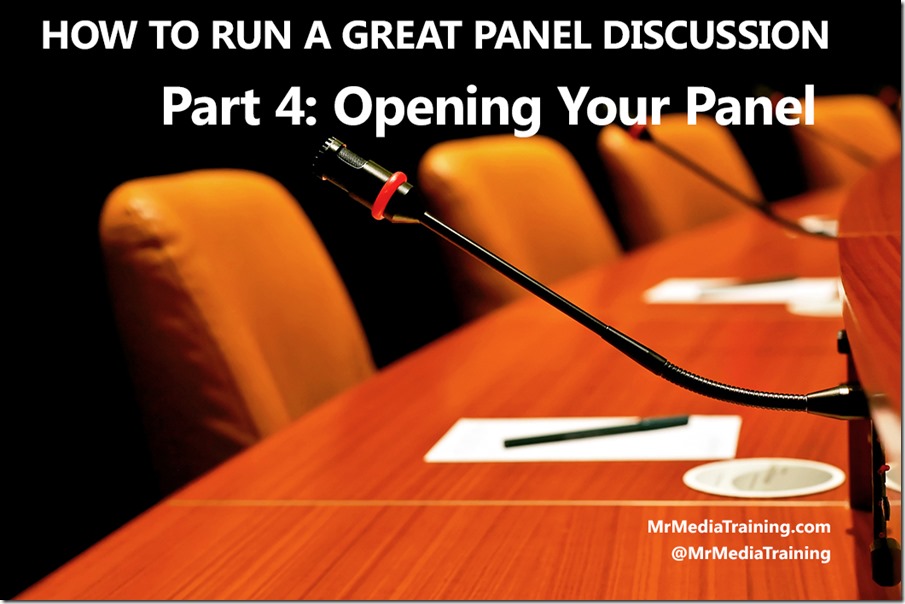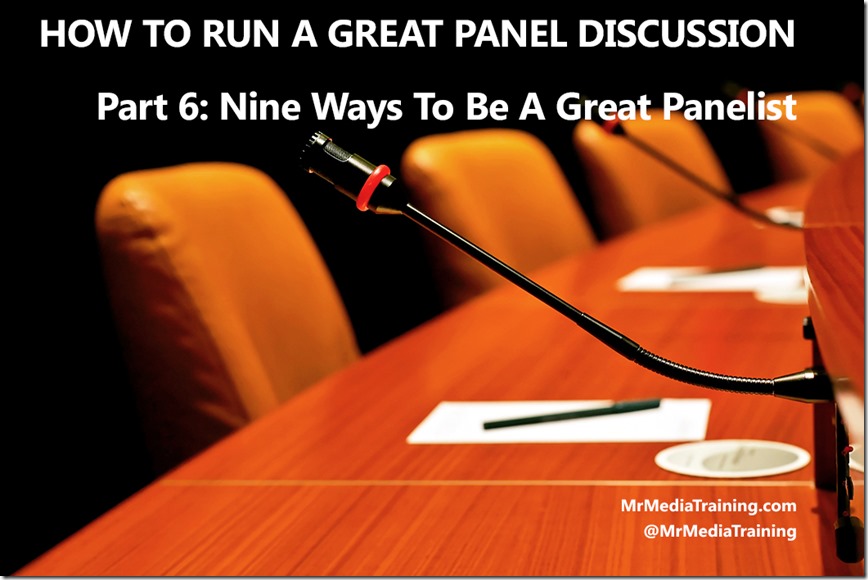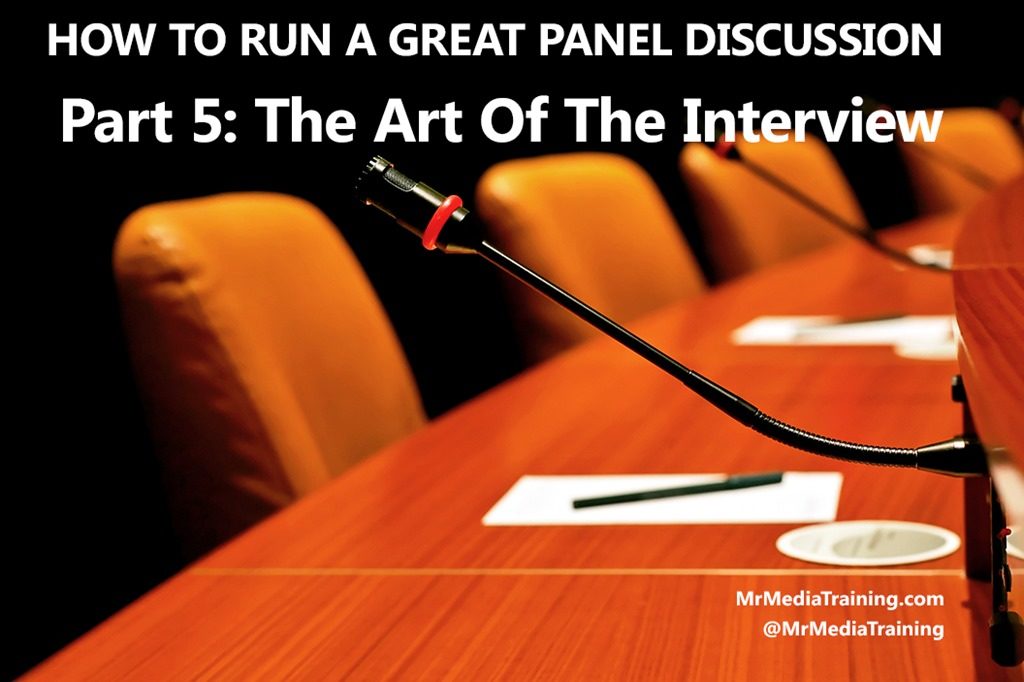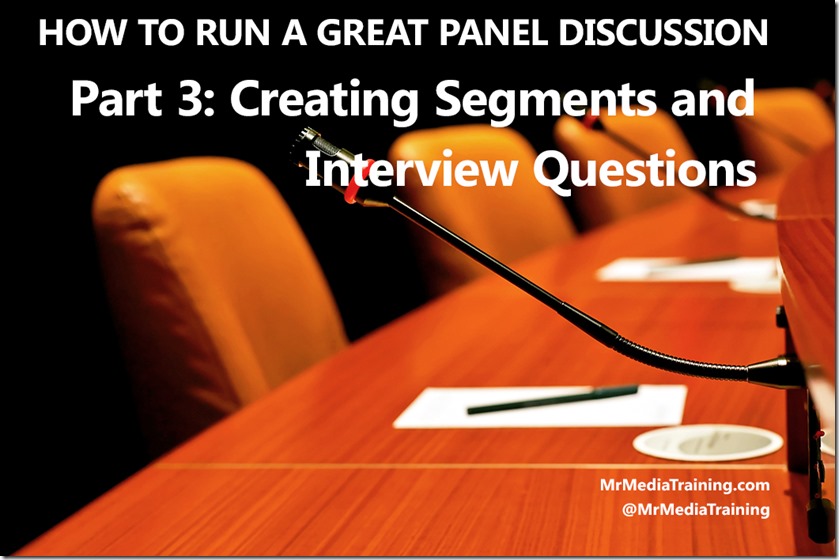Great Panel Discussions: How To Open Your Panel
This is the fourth post of a six-part series that will teach you how to plan and deliver outstanding panel presentations. Click here to see all six parts.
Many panels run for 50 minutes at conferences. Below, you’ll find a typical format, which contains a major flaw. Can you spot it?
- Moderator sets up topic and introduces panelists (5 minutes)
- Each panelist delivers an opening statement (3 panelists x 5 minutes each = 15 minutes)
- Panelists answer moderator’s questions (15 minutes)
- Audience Q&A (15 minutes)
Here’s the problem: By the time the questions finally begin, the panel is already nearing its halfway point — and any energy that was present at the beginning of the session has likely fizzled away.
Shave Time Off at the Start
There’s an easy fix. Shrink the setup and introductions to just a few minutes and eliminate opening statements from each panelist altogether — the audience is there to hear a lively conversation, not three mini-presentations.
Your goal is to set the panel up just enough to establish context for the conversation that follows. You can begin with an open that sets up the topic, its relevance, and key trends; cites a key problem that your panel will help solve; and/or identifies your panel’s goals. Most of the openers you could use for a non-panel presentation would work perfectly here, too.
Then, move on to a mini-introduction of each person. You can read the short bio each panelist provided you in advance — but feel free to add relevant (but brief) detail. And don’t forget to introduce yourself, too!
Moderator in Motion
Moderators typically sit with the panel for the open and introductions. For longer openings, a nice alternative is to start the session and introduce the panel from a standing position toward the front of the stage (while the panelists are seated), then ask the audience to welcome the panel and walk to your seat while they applaud.
Whichever option you choose, you’re just a few minutes into the session at this point, and have already set the foundation sufficiently. You’ve also managed to shave at least 15 minutes off the first two parts of the sample agenda above.
In the next post, you’ll find nine in-depth tips to help you nail the interview.
See all six parts in this series, in which you’ll learn how to plan a panel, set up the room, ask riveting questions, engage with the audience in unexpected ways, and much more!




Hi Brad. I’m enjoying this series, very helpful, thank you.
Of course I could have written comments complimenting you on the other posts, but no, I just take the time to write now that I disagree… shame on me. : – )
I simply think the time to introduce a subject varies enormously with the content, and I tend to value structured exposition much more than unstructured talk (there’s plenty of that online, I don’t need to attend a panel for that). If I have a chance to hear an expert, I want him laying out the terms, the main ideas, the vision, not just answering audience questions which often are first thoughts on the subject, and sometimes are just rants or second-rate mini-conferences.
So for some things 5 minutes is too little, not too much. If it’s lively or not, that depends on the brightness of the ideas. But some ideas take more than 5 minutes to really shine; those are the ones that make me leave my computer, go out and listen to someone.
Hi Pedro,
Thank you for your kind words, and I’ll gladly accept your silent compliments for the articles you enjoyed but didn’t comment on. 🙂
A few points about your comment:
1. First, I agree with your general point that we shouldn’t be overly rigid with strict formats. These tips are general guidelines based on what I’ve observed to be the most commons barriers to effective panels, and the most efficient fixes. There are always reasons to break the format.
2. To clarify, I’m not suggesting that the audience begins asking questions from the start. A (hopefully) skilled moderator would lead the questioning at first, and would be able to tease out the terms, ideas, vision, etc. The next post will offer nine specific tips to become a better interviewer.
3. What you’re describing sounds largely like a one-on-one conversation, which I’d agree has somewhat different rules of engagement than a panel with multiple presenters.
4. My concern is also about audience expectations. “Panel” suggests that there will be conversation amongst the panelists, and possibly even disagreement. A talk with lengthy structured exposition may violate the audience expectation for a panel. A more proper billing might be to just call that a presentation + discussion.
Thanks again for your comment, and for your loyal readership!
Brad